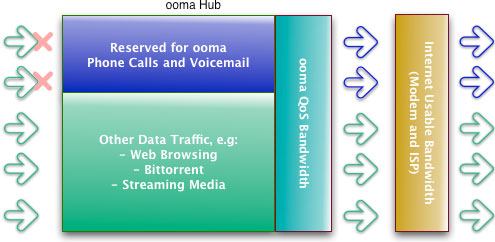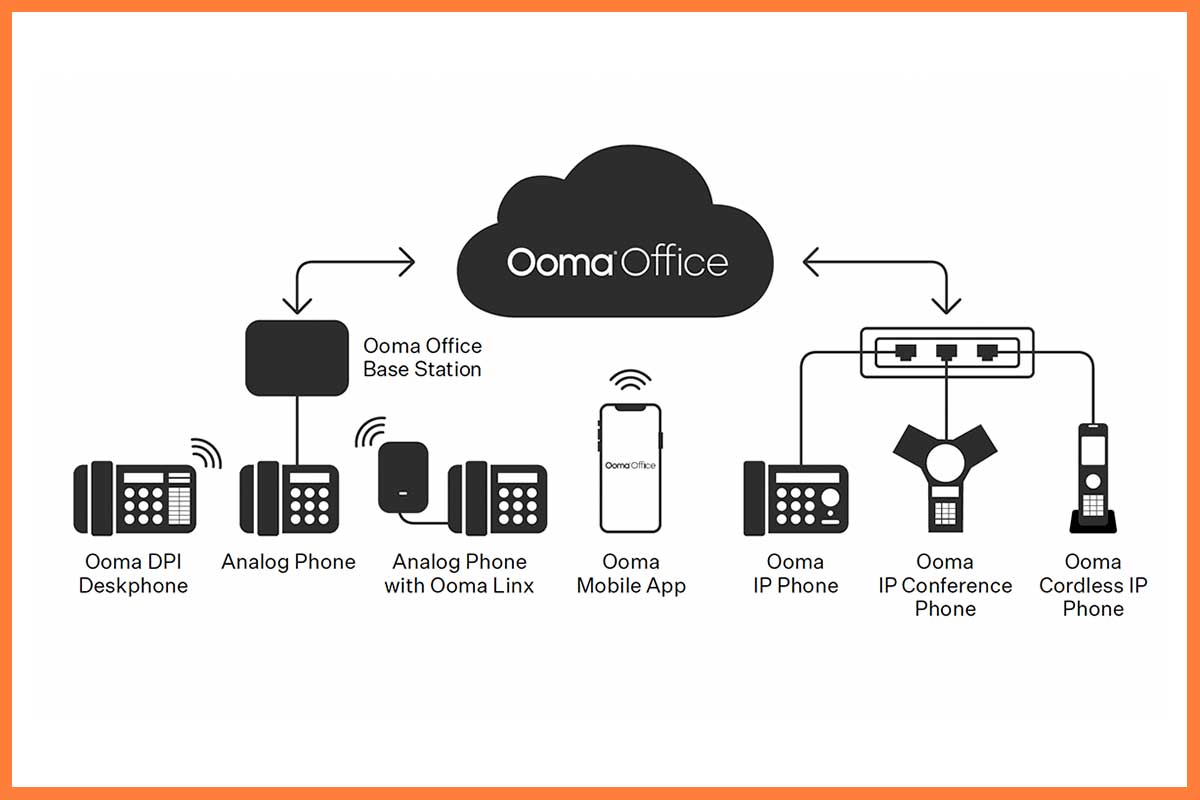Everything you need to know about network jitter

Network jitter can be a nightmare for businesses large and small. If your business uses VoIP calling technology, high levels of network jitter can cause work to grind to a halt. It’s simply impossible for employees to effectively communicate with customers, partners, and each other when VoIP call quality drops.
That has all kinds of ripple effects. Your sales team might miss out on closing a major deal. Or your customers might grow frustrated when they contact you for support. Whatever the case is, the bottom line is high levels of network jitter damage your business.
But what exactly is network jitter? And more importantly, how can you diagnose and resolve network jitter issues? In this guide, we’ll answer these questions and more. You’ll learn what causes jitter and discover key steps you can take to reduce network jitter in your business.
Fixing your network jitter issues isn’t rocket science. With the right approach, you’ll be able to make sure your employees, customers, and partners can communicate better than ever.

Learn more about how Ooma Office can help your business.
Thank you!
An Ooma Office Sales Representative will be in touch shortly.
866-573-0707


Learn more about how Ooma Office can help your business.
Just call 877-621-0515 or click this to CHAT. Or, fill out this form and someone will reach out to you shortly.
Table of Contents
1.
What is network jitter?

When you use the internet or make a VoIP phone call, information is transmitted across the internet in a series of data packets. Millions of these small packets of data are sent at regular intervals every day.
Network jitter occurs when there are variations in the time it takes to transmit these packets. These delays are especially noticeable in activities that rely on two-way communication: like virtual meetings and VoIP calls.
All networks have some level of jitter, and most of the time, you don’t notice it. But when network jitter becomes too high, VoIP calls become unbearably garbled. Fortunately, there are many ways to manage network jitter to ensure it does not disrupt your VoIP traffic.
Network jitter vs. latency
Network jitter is often confused with latency and many people use the terms interchangeably. But there are actually some key differences. If you want to solve your network jitter issues, it’s important you understand them.
Latency refers to the amount of time it takes data packets to be transmitted from one point to another. High latency is very noticeable. If your connection has high latency, it’ll take longer for actions you make to be registered. For example, a web page may load slowly. Alternatively, you might experience lag when using online software tools.
Jitter is a measure of the variation in latency. When jitter is high, there is a much larger variation in the speeds at which data packets are transmitted.
When jitter is at a low level, latency is stable. In practice, that means your experience using the internet, whether for browsing or a VoIP call, is consistent. When jitter is high, data is transmitted at inconsistent speeds. Data packets arrive at different intervals, leading to drops in call quality.
Think of your internet connection as a road. Latency is the speed at which data travels along the information highway. When there are high levels of jitter, it’s akin to there being a traffic jam. Some data packets will still get through quickly but others will take much longer. The higher the jitter, the worse the traffic jam. And nobody likes traffic jams.
2.
How does network jitter impact businesses?

Network jitter can affect businesses in any number of ways. It’s one of several key factors that govern the quality of your business internet connection, alongside other variables like latency, bandwidth, and packet loss. Proactively managing network jitter is one step in ensuring you maintain a high-quality internet connection.
Common problems caused by network jitter
Network jitter is especially impactful for phone and video calls conducted over the internet. In an ideal world, a virtual conversation should feel exactly the same as an in-person conversation. Everyone should be able to see and hear each other clearly, there shouldn’t be any lag, and the call should never cut out.
But if you have high levels of network jitter, it can be impossible to communicate effectively. Video calls might be blurry. Voice calls might drop. And when call quality is poor, miscommunications can happen. Common issues include:
- Static, humming or other background noises
- Calls cutting out or dropping entirely
- Inconsistent audio or video quality
Why is network jitter important for VoIP calls?
If your business uses a VoIP phone system it’s vital you pay attention to network jitter. Any performance issues that delay the transmission of voice data packets, such as network jitter and latency, can have a significant impact on call quality.
When jitter is high, these data packets might arrive in the wrong order, or even not arrive at all. That can cause some of the words each person speaks to be delivered out of order or even missing entirely. When that happens, it’s easy for misunderstandings to occur.
3.
What is an acceptable level of network jitter?

Network jitter is measured in milliseconds (ms), a unit of time equal to one-thousandth of a second. Different categories of internet applications tolerate varying levels of jitter. Some applications, like VoIP calls, demand low jitter. However, others, like video streaming, are more accepting of high levels of network jitter.
While there’s some debate about acceptable levels of network jitter, here at Ooma we recommend that network jitter should not exceed 30 milliseconds. When jitter does exceed 30 ms, internet users are more likely to experience issues with the quality of voice and video calls.
Calculate your savings
See how much you can save with Ooma hosted phone systems by entering your current phone bill.
Go to Savings Calculator4.
How to monitor network jitter

To ensure high levels of performance, it’s vital for businesses to monitor their network jitter level. That’s particularly important if employees report sub-par call quality on their VoIP calls. There are several ways to test for network jitter using network diagnostic tools.
Here is a brief overview of the two main tests used to measure network jitter.
Online ping jitter tests
Performing an online speed test is a quick and easy way to establish the performance of your internet connection. There are many tests available, and they’ll usually give you insights into your network jitter, latency, packet loss, download speed and upload speed. The majority of these tests will provide guidance on how to interpret the results. However, in general, you should aim for the following performance metrics:
- Network jitter: less than 30 ms
- Latency: less than 150 ms
- Packet loss: less than 1 percent
- Bandwidth: at least 100 kbps of bandwidth for each employee
Most of the time, these tests are free to use and can be completed in just a few seconds.
Here are some popular ping jitter tests you can use:
- Ooma Internet Speed Test: This simple, easy-to-use test gives you quick answers on your internet speed, network jitter and latency.
- Speed Test from Cloudflare: This test offers visual insights on the performance of your internet connection, with additional context to help you understand how your internet connection is performing relative to others.
Terminal-based ping jitter tests
While online speed and jitter tests are perfectly fine for most businesses, if you’re more technical or hands-on you can also run your own ping jitter test.
You can do this by opening up the coding terminal (Mac) or command line (Windows) on your computer, typing in “ping” and then entering the IP address of the location you want to ping. You will instantly see a number of metrics on your screen.
While some people may enjoy calculating network jitter on their own, you can use 3rdEchelon’s network jitter calculator. Just copy your results from the terminal or command line, paste it into the calculator and get your results.
5.
What causes network jitter?

If you have high levels of network jitter, it’s time to investigate what’s causing it. Then you can determine where to best allocate resources to fix the issues.
While it can be difficult to troubleshoot the exact cause of network jitter, here are several common causes:
- Outdated internet equipment
- Inadequate internet bandwidth
- Reliance on overcrowded wireless networks
Let’s take a look at each of these common causes in a little more detail.
Outdated internet equipment
If your internet equipment is several years old, there’s a good chance it may be a primary driver of your network jitter issues. Many pieces of older equipment simply weren’t designed to handle the quantity of traffic today’s internet users demand, particularly when it comes to handling VoIP traffic.
If your network has older routers, cables or switches, they could be contributing to your network jitter issues. This is especially true of routers. Upgrading your router is often one of the easiest ways to fix network jitter issues.
Inadequate internet bandwidth
If your business has grown since you first signed up for your internet service, there’s a chance you don’t have enough internet bandwidth. Bandwidth refers to the amount of data that your internet network can transfer in a specific period of time.
Inadequate bandwidth can influence network jitter when there are too many active devices on your network. In essence, your network is overcrowded: There’s too much traffic and not enough capacity to smoothly transmit it all.
Think back to our earlier example of your internet connection being a road, where latency is the speed information travels at and jitter is the amount of traffic on the road. You can think of bandwidth as the number of lanes on the road. The greater your bandwidth, the easier it is to transmit high volumes of internet traffic.
Reliance on overcrowded wireless networks
The advent of wireless communication networks was a game changer for the wider telecommunications industry. But despite its popularity, wireless networks tend to offer a lower standard of internet connection than wired equivalents.
Consider installing Ethernet cables that your employees can use when minimizing network jitter is important, such as video calls. You may also want to upgrade to wired VoIP phones or wired VoIP conference calling solutions to minimize any issues.
6.
How to remedy network jitter

Once you’ve explored some of the causes of network jitter issues, take steps to remedy them. These include:
- Upgrading your internet hardware
- Optimizing bandwidth usage
- Check if you have a jitter buffer
- Enabling Quality of Service (QoS)
- Upgrade to a superior VoIP solution
Taking these steps can have a huge impact, significantly improving VoIP call quality and network congestion. Let’s take a closer look at what’s involved in each of these approaches.
Upgrade your internet hardware
As mentioned above, if an older internet router is the primary cause of your network jitter issues, it’s time to upgrade. Many modern internet routers feature packet prioritization technology that gives priority to voice traffic over data traffic. This minimizes the impact that network jitter has on VoIP calls.
However, it may not be your internet router that’s causing your network jitter issues. It could be some other element of your internet infrastructure.
If you currently use Ethernet cables for your desktop computers and VoIP phones, it may be time to get some newer cables. There are a variety of different categories of Ethernet cables. Upgrading to a superior cable can have a huge impact on internet performance, unlocking higher bandwidths and minimizing factors like jitter and packet loss.
Optimize bandwidth usage
Sometimes, businesses will unwittingly use large portions of their bandwidth on activities that are not essential to their business. Activities that eat up bandwidth include streaming video, performing software updates or heavy use of cloud-based software platforms.
Consider changes you could make to address unnecessary bandwidth usage. Instead of streaming music in your reception area, play downloaded tracks. Perform software updates after normal working hours. Taking steps like these frees up bandwidth for important communications and minimizes network congestion. If your business is investing in cloud-based software solutions it’s best to continuously evaluate your internet bandwidth usage. Check bandwidth allocation each time you upgrade from a desktop software solution to a cloud-based platform: many cloud-based software utilizes a significant level of internet bandwidth.
Check if you have a jitter buffer
Jitter buffers help ensure voice data packets arrive in the right order by delaying data packets and reordering them correctly.
Most VoIP providers already have jitter buffers with their phone systems, so you shouldn’t have to worry about purchasing or installing one. However, if you want peace of mind you can contact your service provider and ask them if there’s a jitter buffer with your system.
If, for whatever reason, your provider doesn’t have a jitter buffer you can purchase and install your own. When you configure it, you should make sure the jitter buffer is set to 200 ms or less. If the buffer is too low, you could end up increasing packet loss, and if it’s too high you’ll have noticeable lag.
Enable Quality of Service (QoS)

Business internet networks transmit a lot of data. But unless you set up Quality of Service priorities, all of your data is treated the same. To reduce the impact network jitter has on your VoIP calls, assign voice data as the highest priority on your network.
Essentially, this means that VoIP data packets are sent before other forms of data that are not so reliant on two-way transmission. You can do this by prioritizing certain users or devices according to their importance. Allocating a higher priority to the devices of employees who field phone calls from customers all day can improve their call quality.
To do this, we recommend you work with your internet service provider. They may need to change the settings on your internet router. You should also ask them to make sure certain ports are open, which would make it easier for your VoIP solution to perform up to standard, which would mean that your network needs to be reconfigured to support a VoIP solution.
Upgrade to a superior VoIP solution
Since VoIP technology first became popular with business users, the underlying technology has evolved significantly. If you’re still using a first-generation VoIP system, it might be time to upgrade to a business phone system that features the latest VoIP technology.
Market-leading VoIP solutions like Ooma Office don’t just offer businesses a wealth of advanced features, they’re also powered by technology that delivers crystal-clear call quality that’s noticeably better than the competition. By switching from traditional business phone systems, you can often save money while experiencing higher-quality service.
7.
Upgrade your communications infrastructure

Ultimately, network jitter is governed by many factors. But one of the most important is your underlying communications infrastructure.
Investing in newer, better technologies can be a game changer for the way your business operates, enabling employees to collaborate seamlessly across departments.
If you’re interested in learning more about how to upgrade your communications infrastructure, reach out to Ooma. From managed Wi-Fi service, to high-quality business internet, to all-new enterprise solutions, Ooma can help fulfill your communication needs.
Get started with Ooma today.

